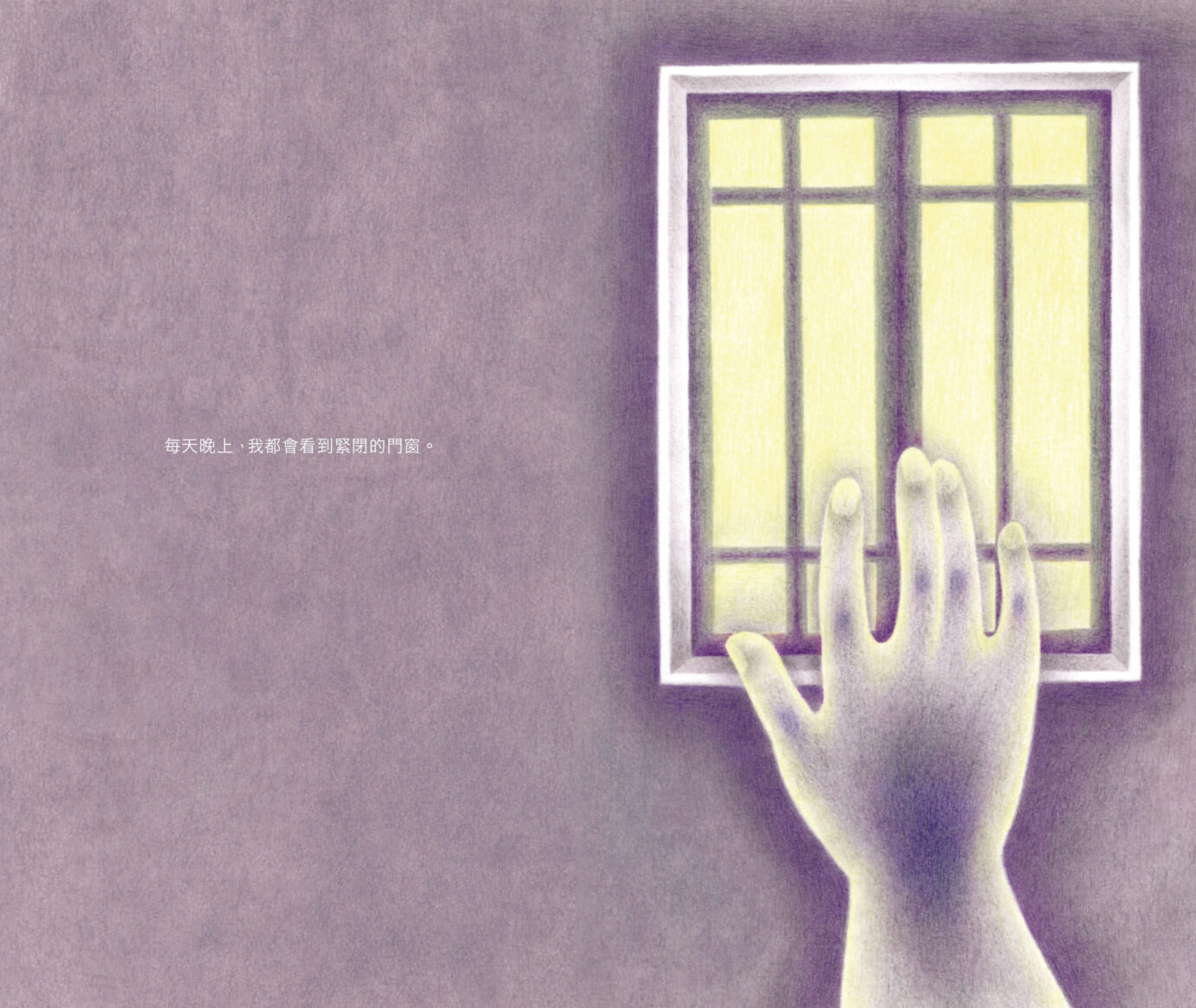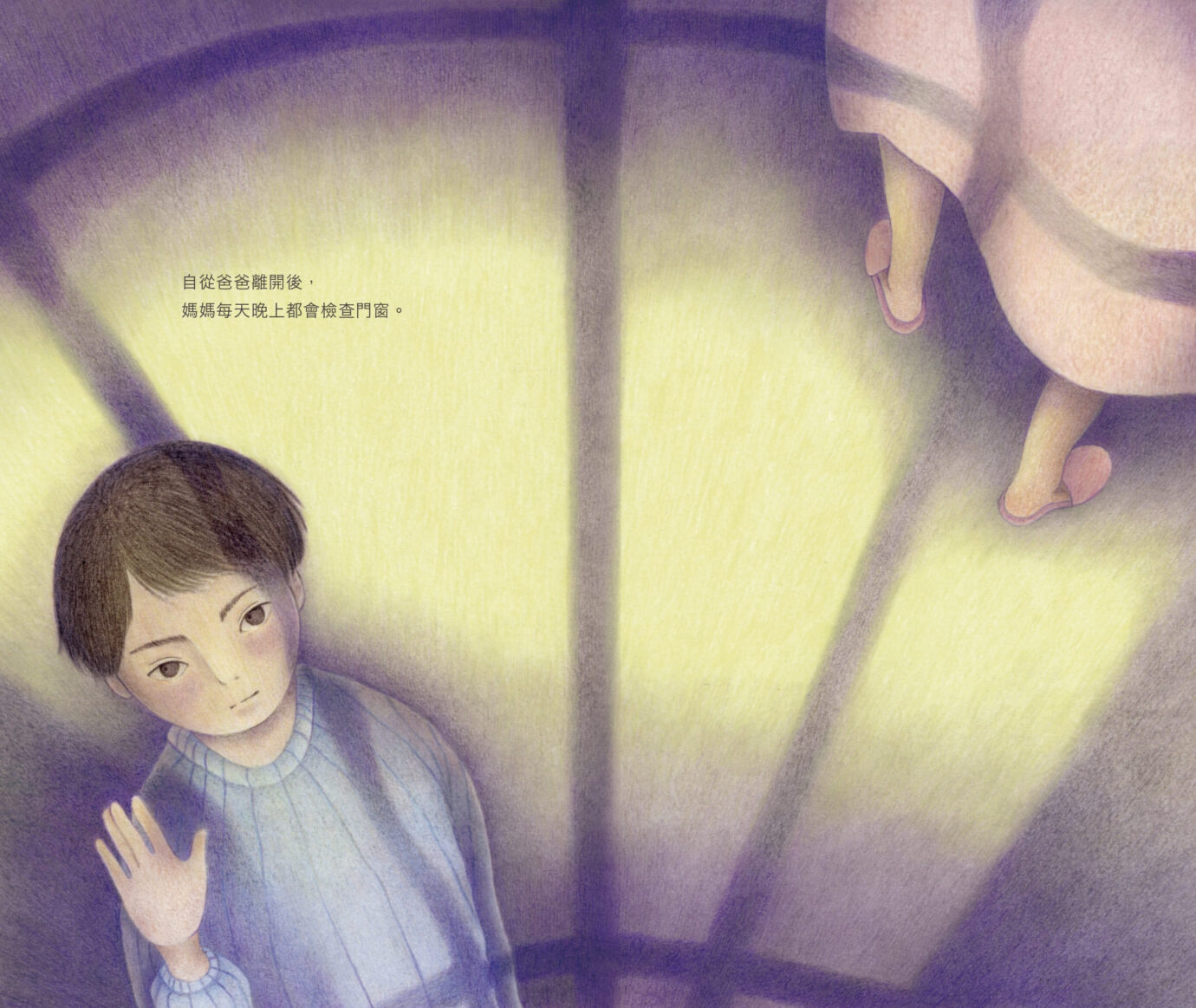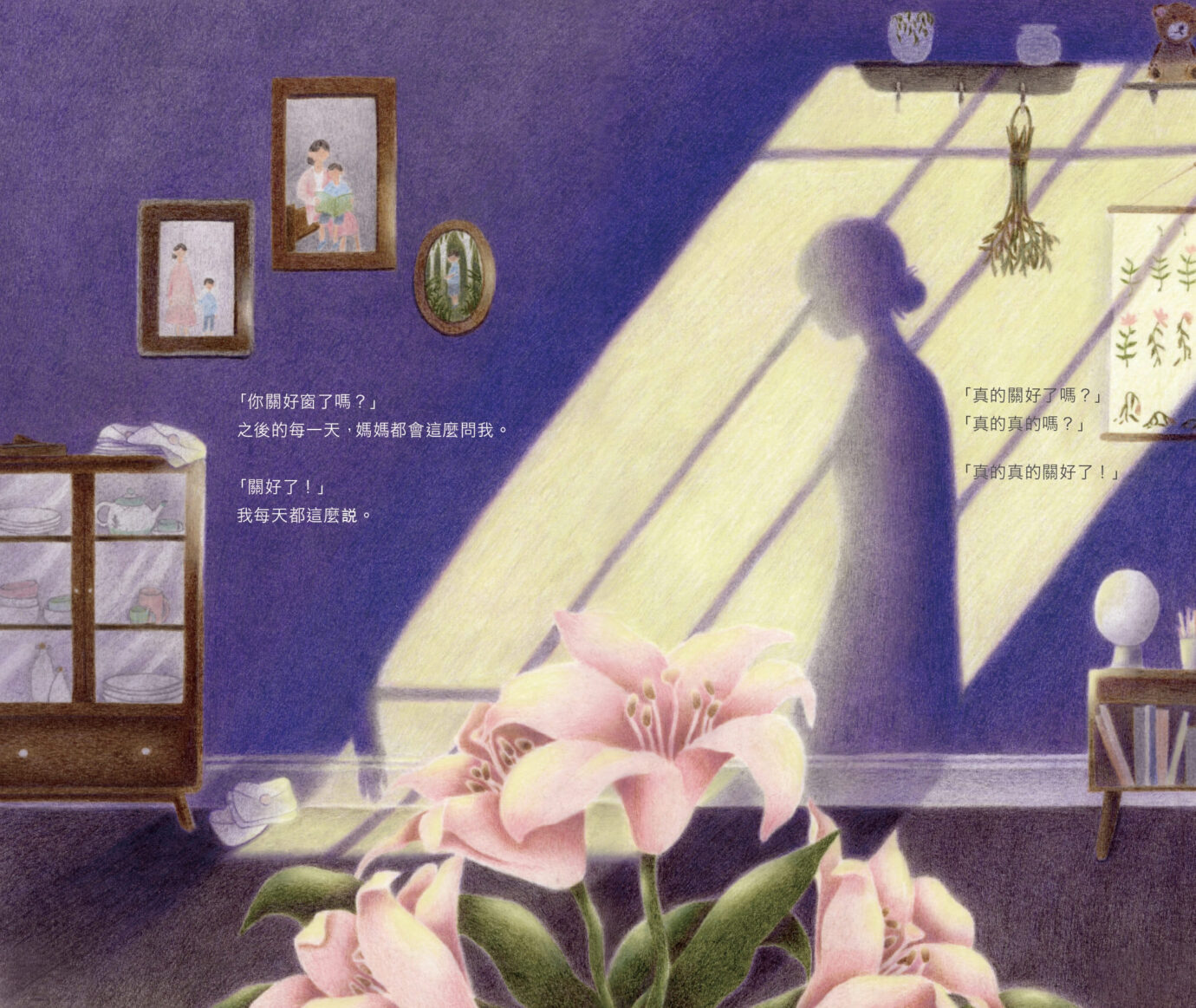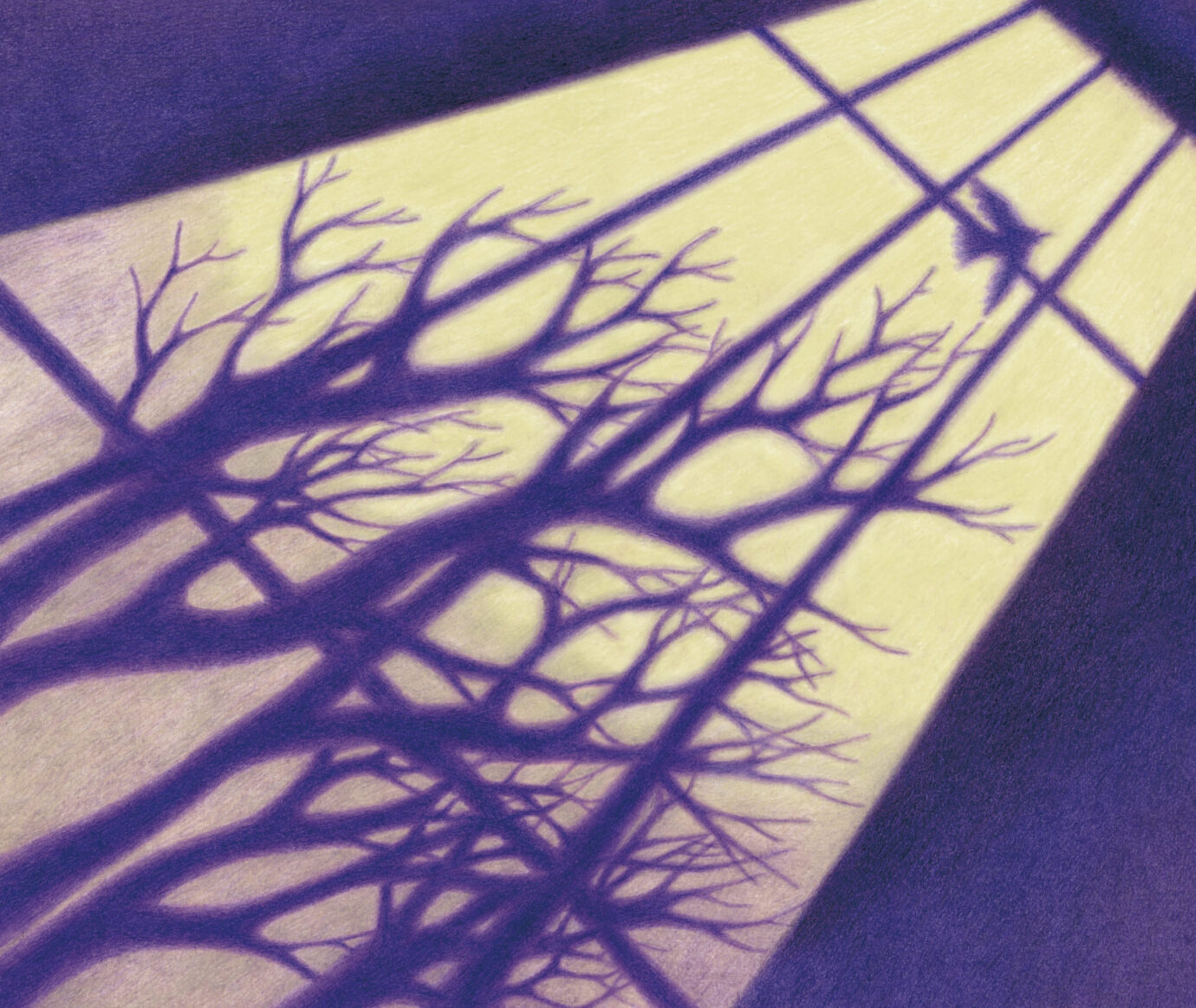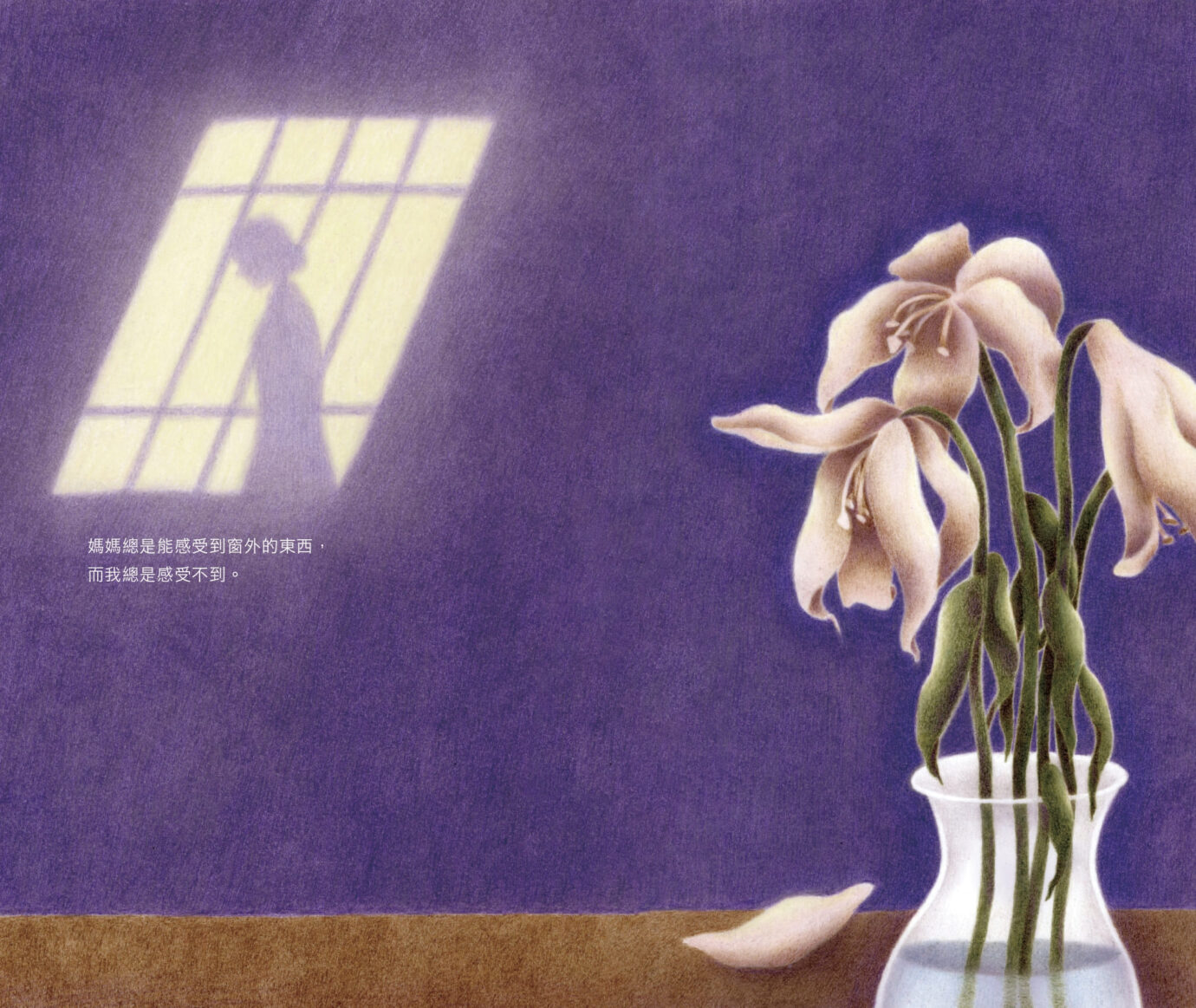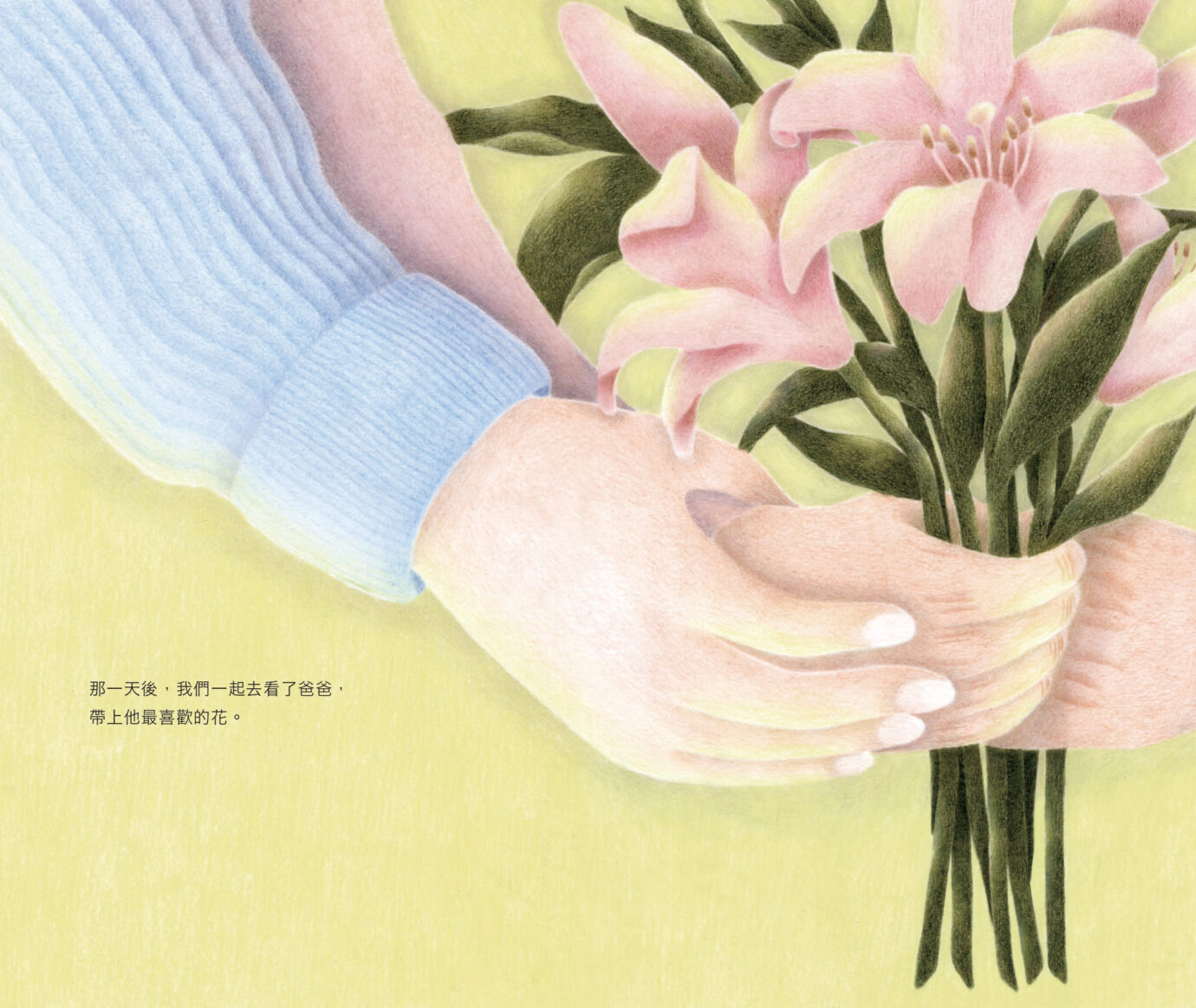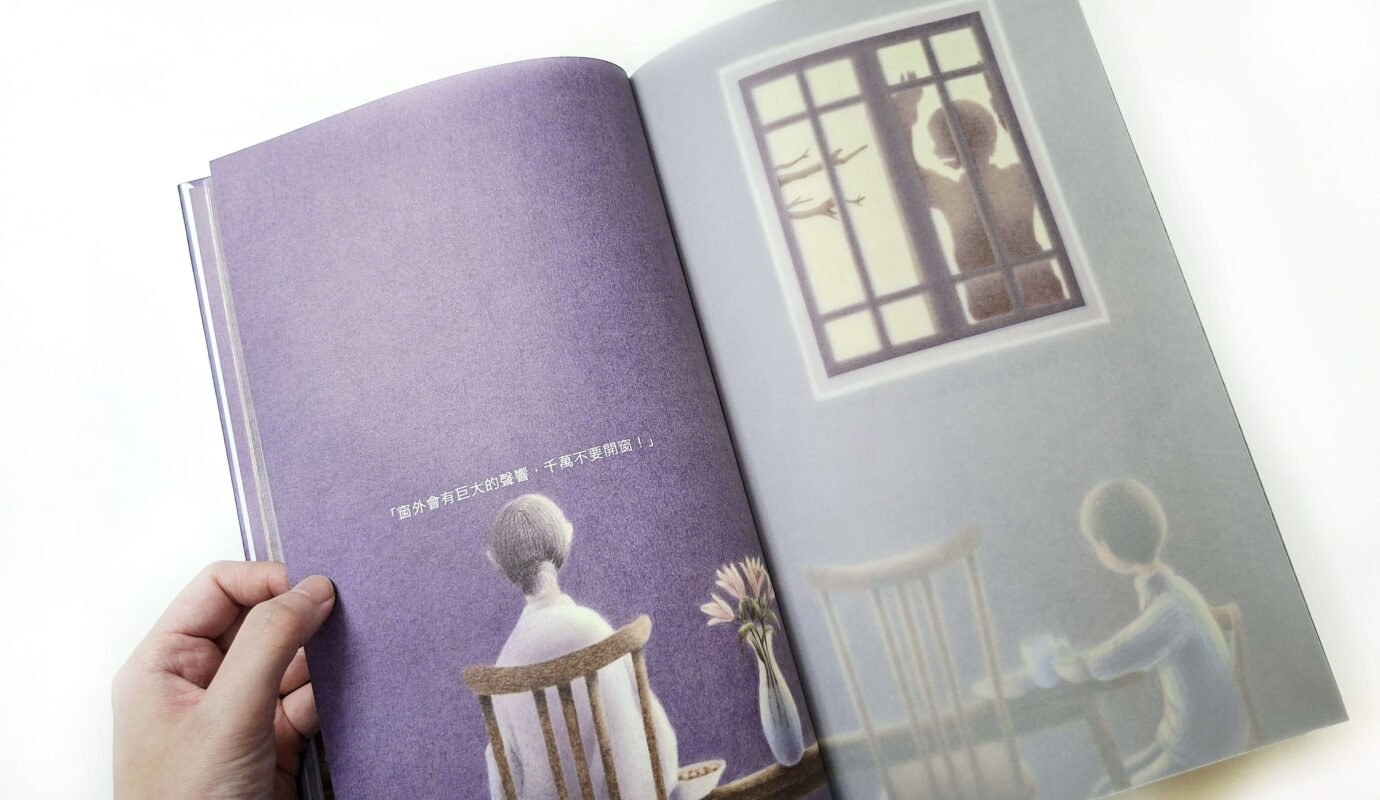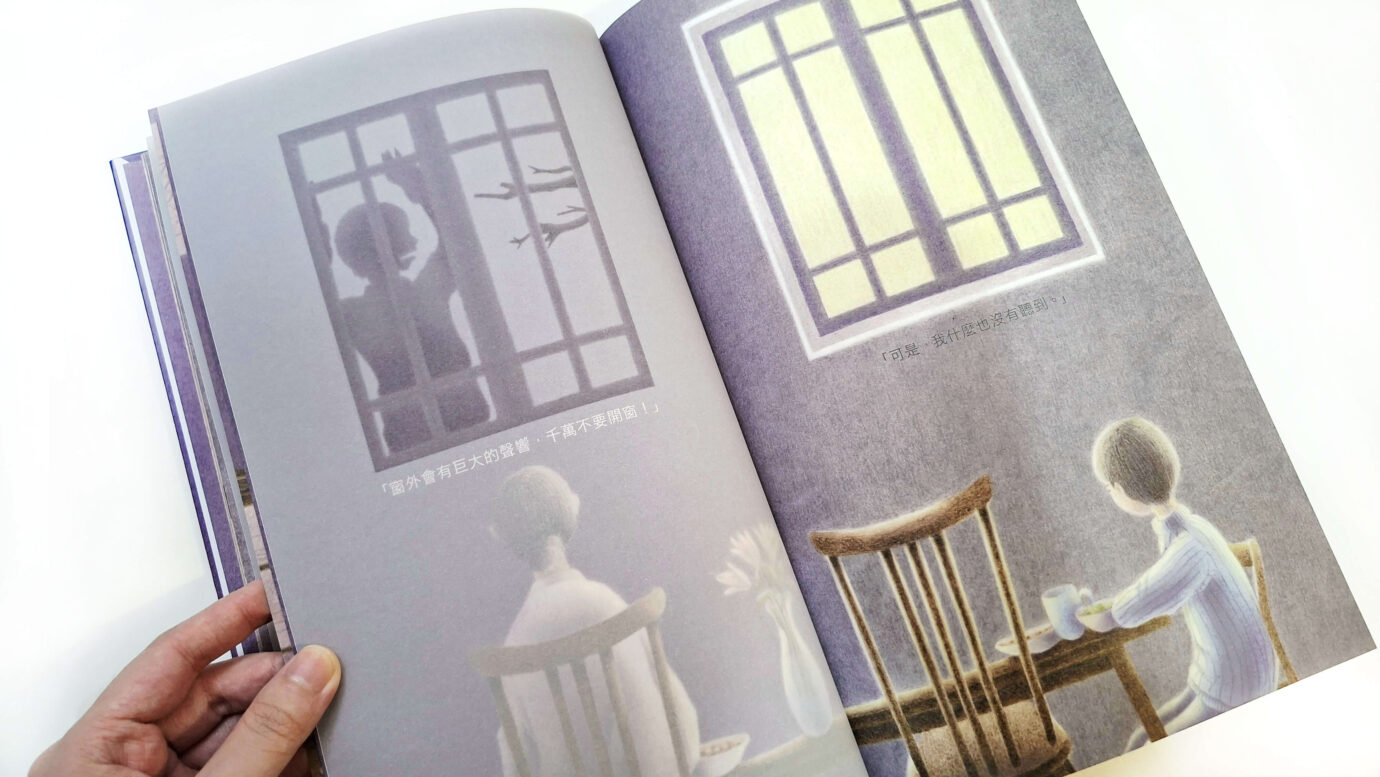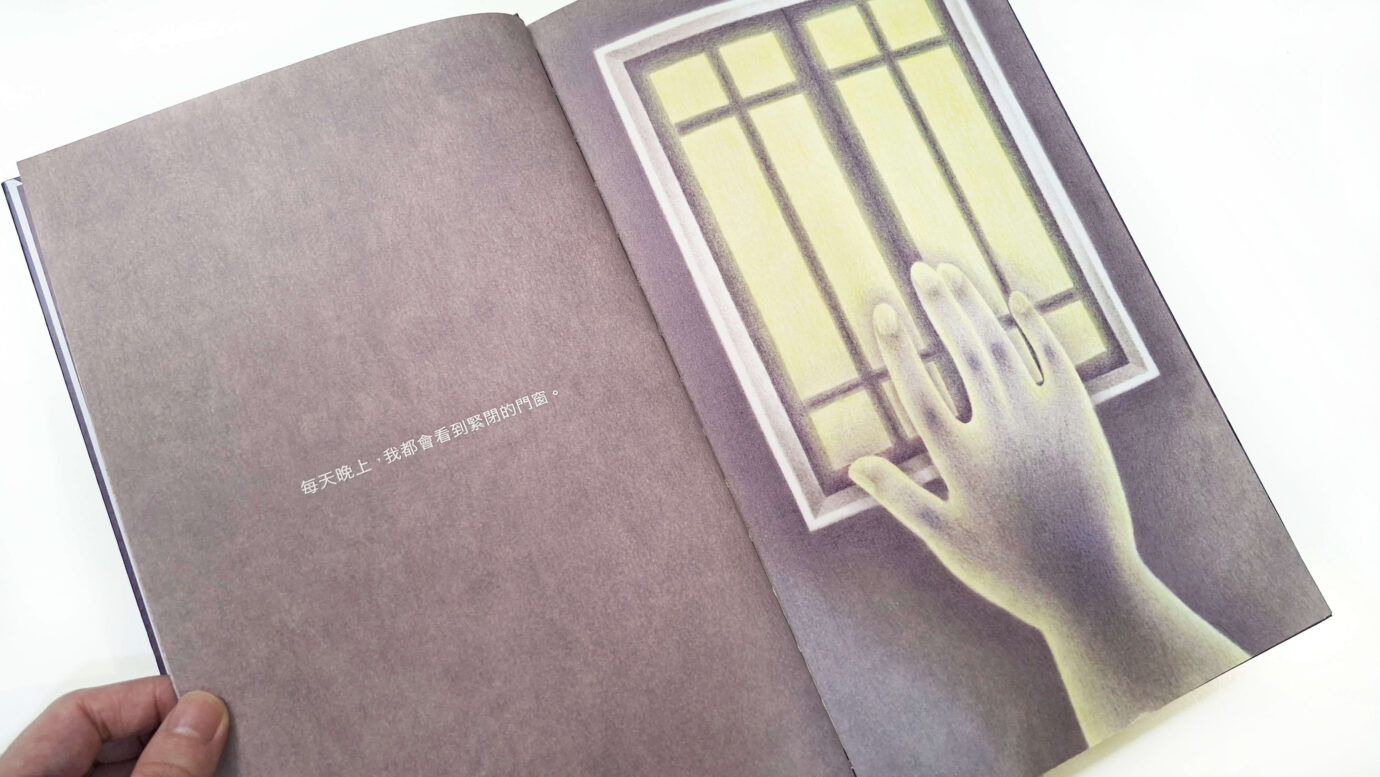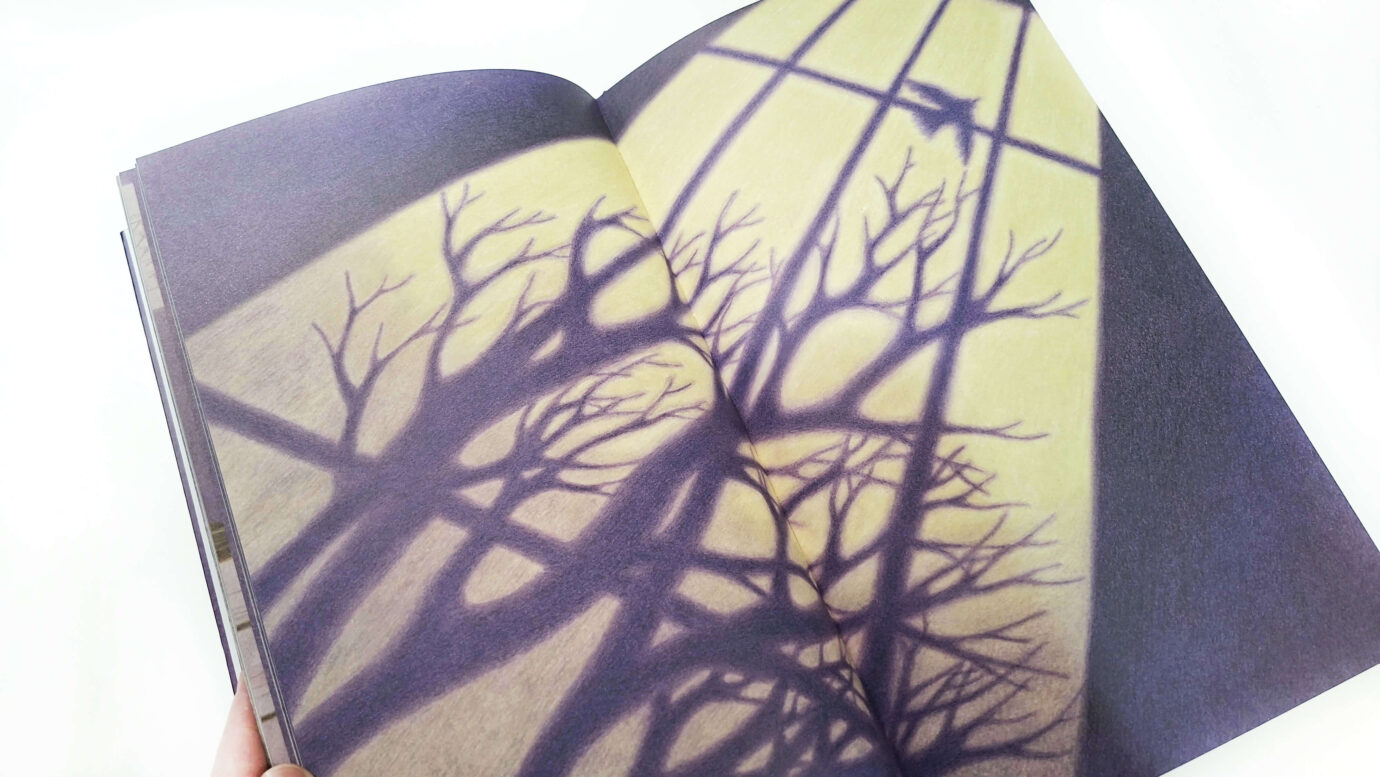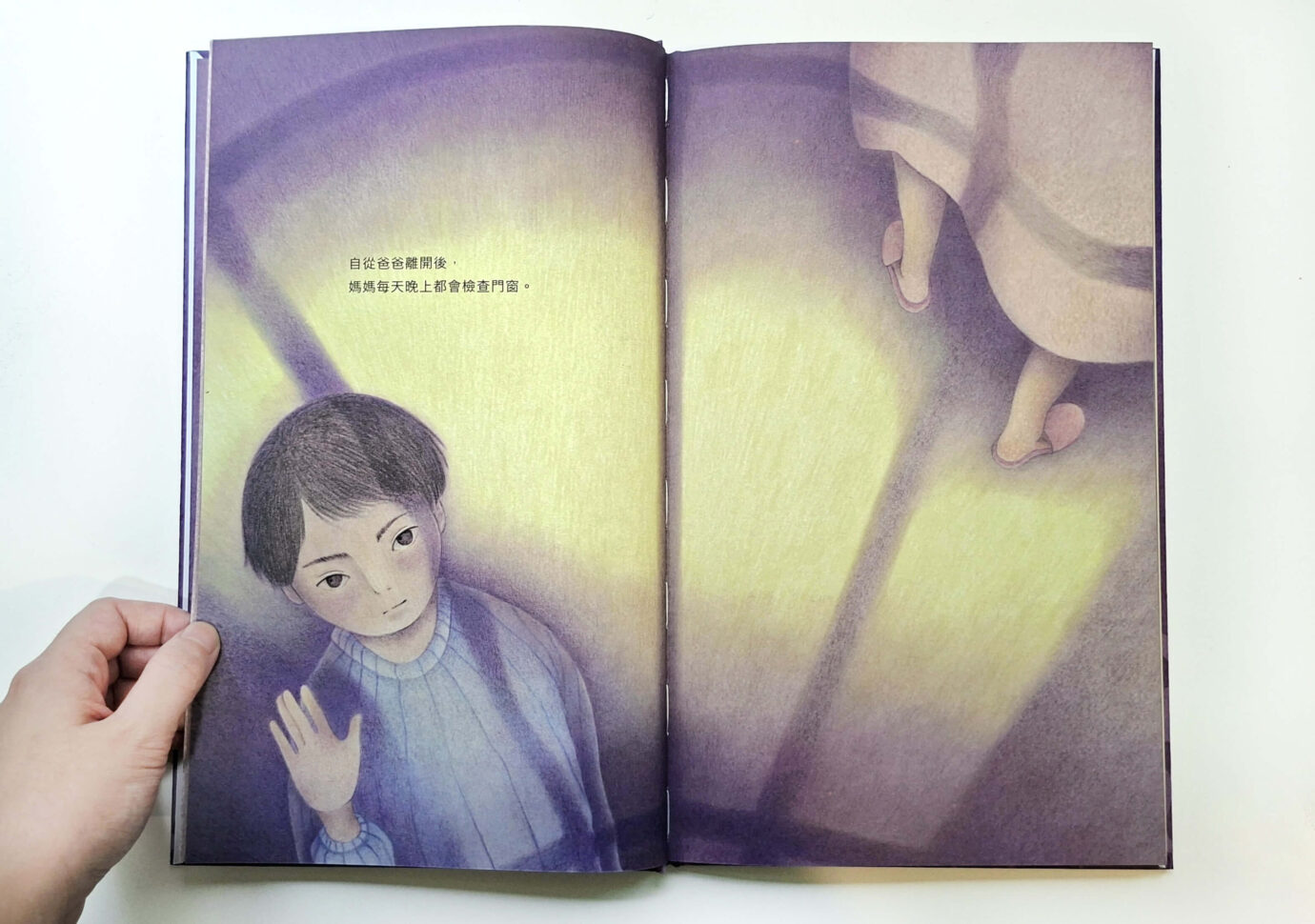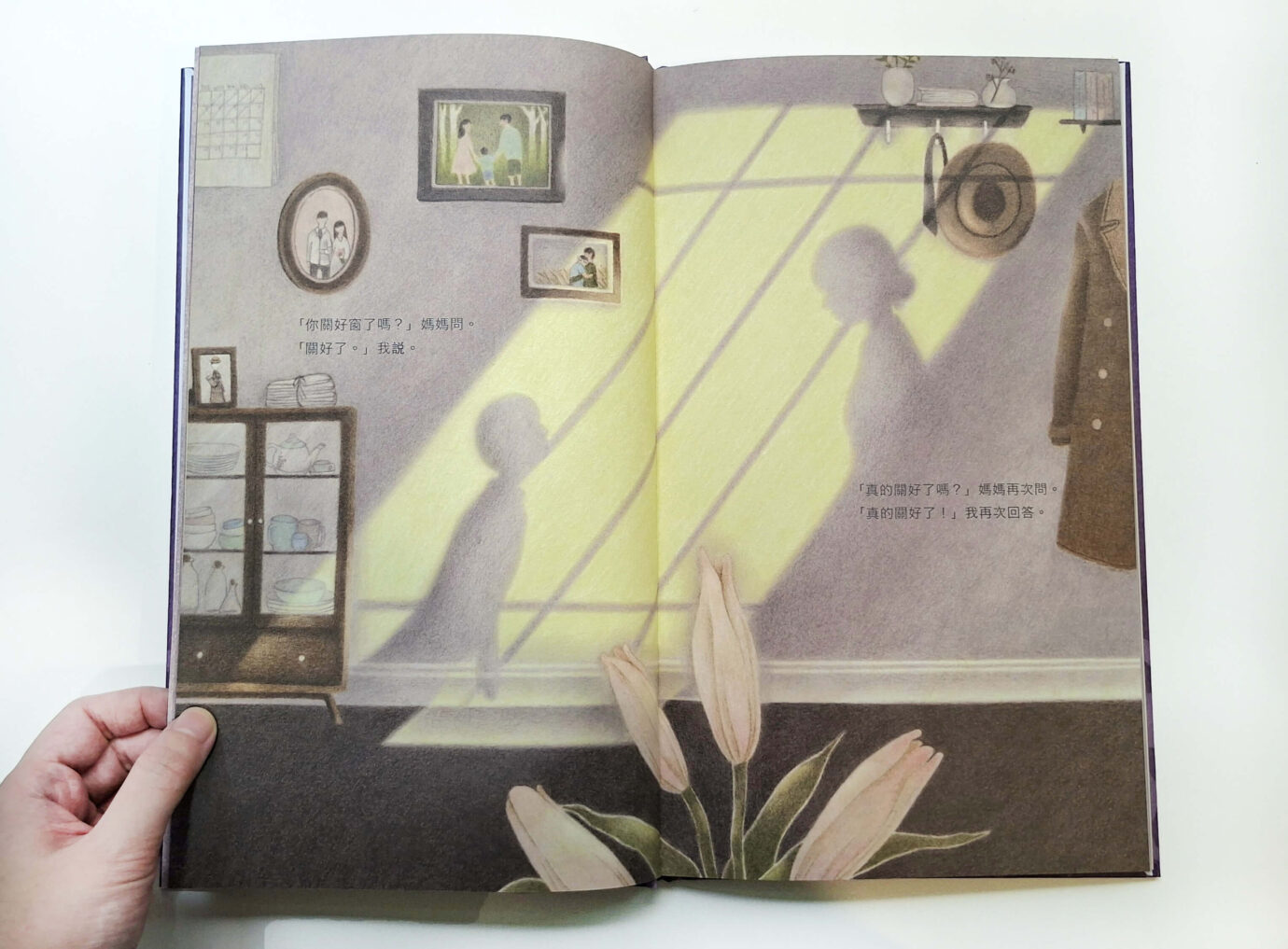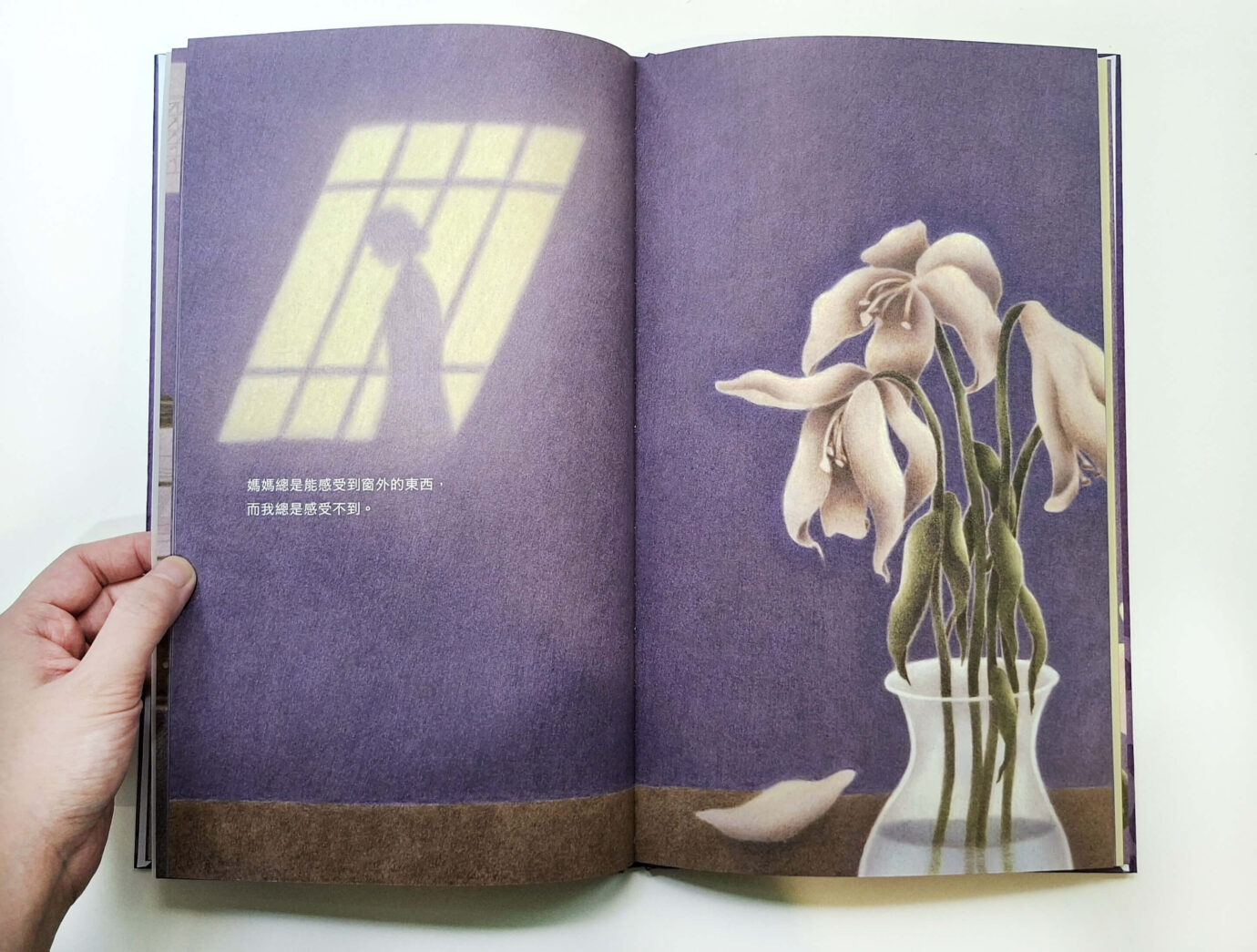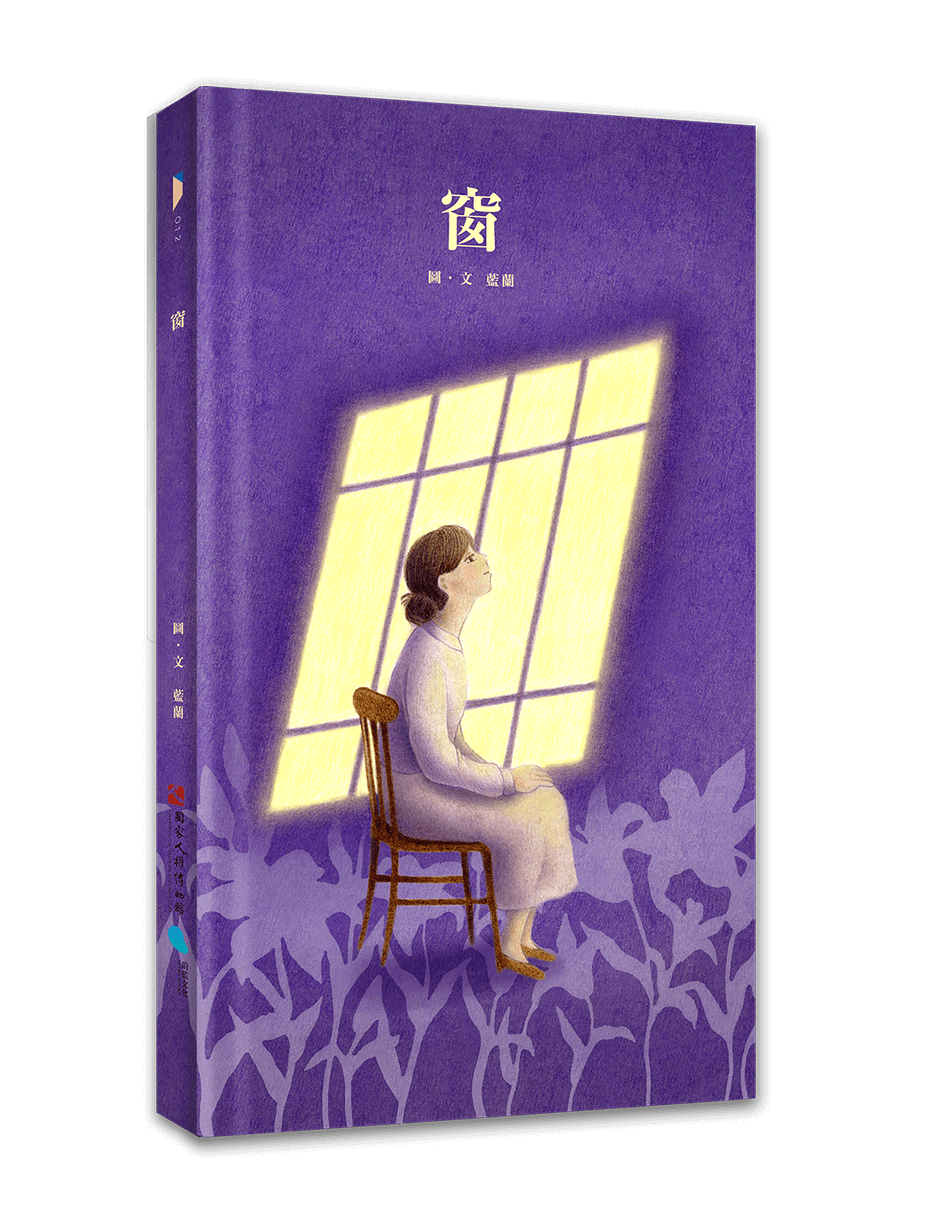
《窗》
國家人權博物館「畫話:一座島嶼的故事」人權教育繪本三獎
▸ 文 / 圖|藍蘭
▸ 平裝|44頁|17.8 x 30 x 1 cm
▸ 全彩印刷|初版
▸ ISBN|9786263951914
▸ 2025/09 蔚藍文化出版
自從爸爸離開後,媽媽每天晚上都會檢查門窗,
窗外有巨大的聲響、異樣的氣味、可怕的人影,彷彿隨時會闖進來。
但我從沒看見那些東西,窗外看起來一如往常,
窗外,究竟是什麼樣的風景呢?
Since Dad passed away, Mom checks the doors and windows every night.
Outside, there are loud noises, strange smells, and frightening shadows—
as if something terrible might break in at any moment.
But I’ve never seen any of those things. The view outside looks just the same as always.
What kind of scenery is it, really, beyond the window?
敘事介紹
《窗》是一本描繪「威權幽靈」與「創傷療癒」的繪本。
故事取材至臺灣威權時代結束後,家庭所遺留的傷痕。透過政治受難者共同存在的「重覆性創傷行為」,將視角延展至受難者家屬與其後代,並以特殊裝幀的描圖紙與翻頁設計,表現威權時代留下的恐懼與創傷及家屬身為「獄外之囚」的生活縮影。
“The Window” is a picture book that depicts the “ghosts of authoritarianism” and the process of “trauma healing.”
The story draws from the lingering wounds within families after the end of Taiwan’s authoritarian era. Through the recurring traumatic behaviors shared among political victims, the narrative extends its perspective to their families and descendants.
Using tracing paper and layered page-turning as part of its unique bookbinding design, the work visualizes the fear and trauma left by the authoritarian period, as well as the lives of family members who became “prisoners outside the prison.”
設計與裝幀
本書運用描圖紙的翻頁設計,呈現孩童與成人之間恐懼「可見」與「不可見」的差異,並以描圖紙的紙材表現恐懼的幻影。
在後半段的敘事裡,描圖紙又成為了重疊時間與動作的媒介,隨著讀者一頁頁翻開,書中的孩子也會逐漸成長,並望向歷史。描圖紙的設計運用,同時呈現了對於恐懼的渲染與威權幽靈的幻影,同時也象徵著讀者與孩子一同靠近歷史創傷、邁向療癒的過程。
The book uses tracing paper in its page-turning design to reveal the contrast between what is “visible” and “invisible” in the experience of fear between a child and an adult, with the translucent paper itself embodying the phantoms of fear.
In the latter part of the story, the tracing paper becomes a medium that overlaps time and movement. As readers turn each page, the child in the story gradually grows and begins to look back at history. The use of tracing paper not only amplifies the sense of fear and the lingering ghosts of authoritarianism but also symbolizes the shared journey of the reader and the child—approaching historical trauma and moving toward healing.

